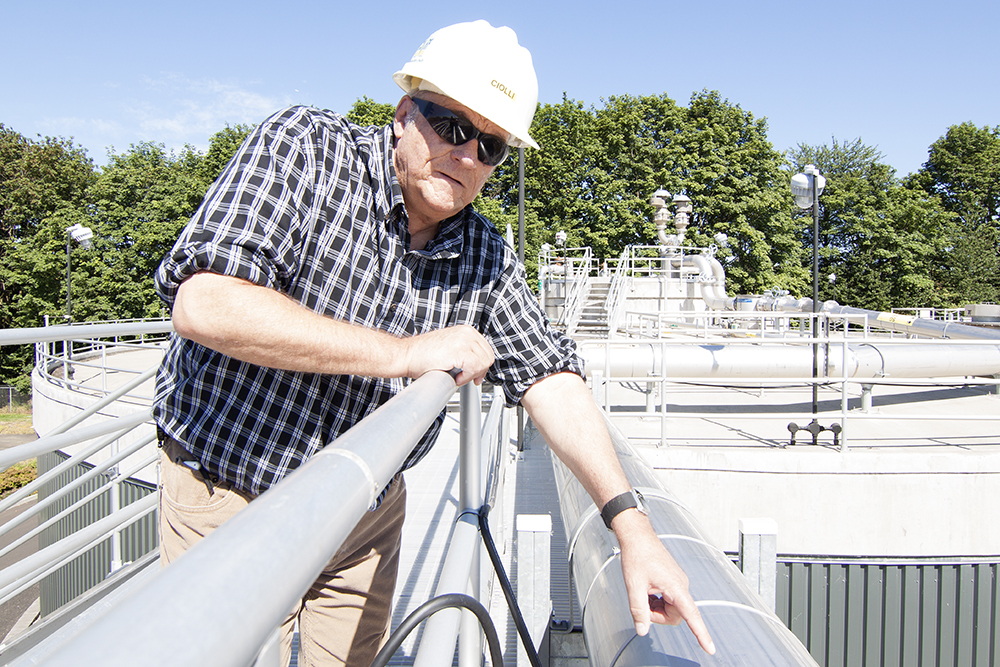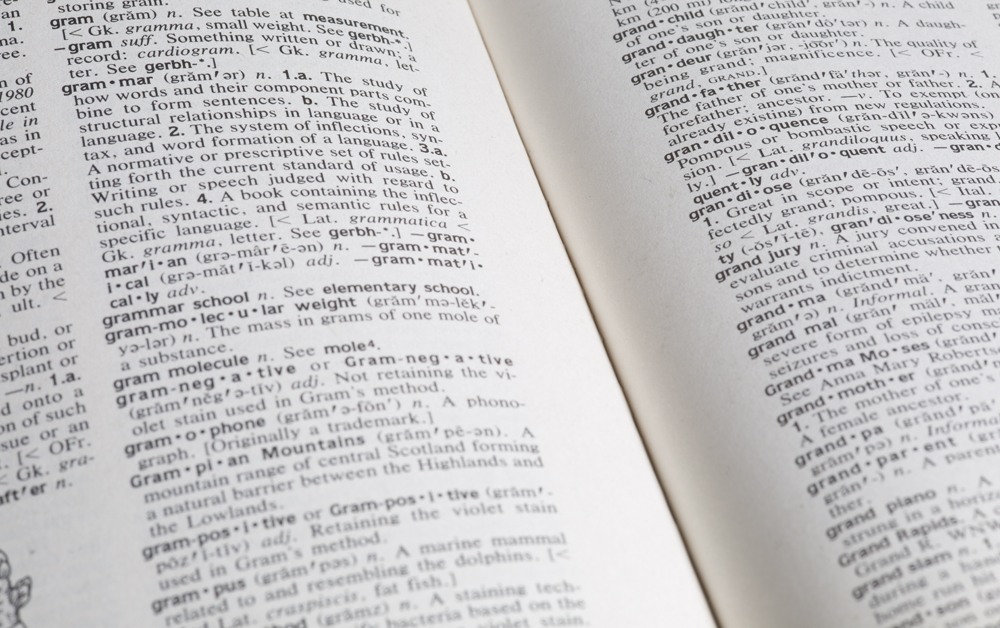This year marks the 30th anniversary of a long-standing business relationship between Portland’s Bureau of Environmental Services and Malarkey Roofing Products, a local company that has been headquartered in North Portland since 1956. The anniversary commemorates not only an upstanding business arrangement, but also a landmark in Portland’s history of being a forerunner in environmentally responsible thinking.
An innovative partnership
It started out in 1983, according to James S. Fagan, CEO and president of Malarkey Roofing.
“Mike Malarkey, who was the individual who hired me, used to commute every day from Scappoose, Oregon, get off the St. John’s bridge, drive down Columbia Boulevard and see the flaring of the methane system,” Fagan said. “In our particular industry, natural gas heating our systems is an everyday occurrence, he looked at it as an alternative to natural gas.”
Since that time, Malarkey Roofing has worked to utilize this alternative to the fullest.
“We have hot oil systems here that heat all of our asphalt tanks,” Fagan said. “In our business, heat at a four hundred degree temperature is a must in order for the product that we manufacture to be processed.”
Fagan, who said that the shingles that his company produces are recyclable, takes pride in running what he envisions as an eco-friendly business.
“From an environmental standpoint, historically, the sewer plant down the street can only consume so much,” Fagan said. “About 75 percent of the gas they’re producing is either used by them or Malarkey Roofing today, so the option was to flare [the rest of] it off which is obviously impacting the environment…and so what we’re doing is converting that into a usable product.”
Malarkey Roofing is looking to push that number as high as 90 percent, simultaneously increasing their throughput as a shingle manufacturer and ensuring that as little excess gas as possible is burned off into the atmosphere. According to Fagan, his company’s goal is quite progressive compared to other cities in the region. Salem, he said, still has a long way to go before it can attest to that margin of biogas usage.
“The biggest thing is that [30 years ago] it was unheard of for somebody to do this and let alone have to have a relationship with the same person for 30 years. We have no competitors in the marketplace today that are actually doing this,” Fagan said. “They have the resources to help us, so it’s gone well.”
Traci Shaw, Malarkey Roofing’s communications director, shared her positive outlook on the relationship between the two entities as she explained a bit about the geographic benefits of working with the bureau.
“We were able to run the [gas] line from where their facility is…across the Columbia slough to Malarkey,” Shaw said.
Running the line to the opposite bank of the slough has a number of advantages for Malarkey, who maintains it to this day. Shaw added that choosing to run the gas line under North Columbia Boulevard could have been disastrous in the event of a leak. Whereas they would have to stop traffic and tear up the road for repairs had the line been built under the boulevard, digging it up is a comparatively easy and unobtrusive task at its current location.
Stephen Behrndt, director of operations at the Columbia Boulevard Wastewater Treatment Plant agreed with Shaw’s positive analysis of the pipeline’s construction.
“It ends up being a great model because, of course, over the first number of years, the capital investment to build those systems would have been paid off and then the ongoing operation and maintenance costs…become fairly cost-effective.”
Putting Portland’s biogas to use
Mike Ciolli, wastewater treatment manager for operations at the plant, explained in detail what exactly the biogas that Malarkey uses is and where it comes from.
“Most of the wastewater from the city of Portland comes into this plant. As it comes in, it goes to various treatment processes and we end up with two significant products of the wastewater,” Ciolli said. “The first one is clear liquid that is disinfected and sent out to the river. The second product is what we call sludge, that’s the brown stuff. It is sent to ten anaerobic digesters—anaerobic means without air—and that describes the type of process that it goes through; it’s a bacterial process that breaks the sludge down and one of the big by-products of that is methane.”
Ciolli added that a full 57 to 67 percent of the one and a half million cubic feet of biogas that the plant creates on a daily basis is made up of methane. This methane is then used to generate energy for the Columbia Boulevard Wastewater Treatment Plant and Malarkey Roofing alike in lieu of natural gas and electricity from offsite. Unlike natural gas and many sources of electricity, the plant’s biogas is a fully renewable energy source, making it both environmentally friendly and viable in the long term.
The treatment plant’s share of the methane is used to produce 1.8 megawatts of electricity per day, accounting for 40 percent of the sprawling facility’s energy consumption, according to Ciolli. This helps minimize the energy that the plant needs to draw in from offsite. Only so much of the biogas can be usefully processed at once, so roughly 25 percent of it is still burned off into the atmosphere.
“It’s a good income source for us. We sell them the gas; they buy it at greatly reduced rates over what they would get from Northwest Natural. We have the added benefit of utilizing the resource that is a product of this plant,” said Ciolli. “Our goal is to beneficially reuse this digester gas as much as possible and Malarkey uses a pretty good portion of that, so that’s a pretty good reuse.”
Over the thirty long years of cooperation between the bureau and Malarkey, other cities have adopted similar practices.
“I think most municipalities are finding ways to beneficially reuse the by-products of their cities,” Ciolli said. “This is probably the longest partnership that I am personally aware of where digester gas is beneficially reused for something other than uses on site. It’s very common for wastewater treatment plants to use small co-gen facilities to produce a small amount of electricity and a small amount of heat that they recover as a result of that…it’s becoming much more common now as awareness comes up on the fact that this is actually a resource that should be being used.”
A Portland State perspective
Adjunct Professor Catherine Howells of Portland State’s College of Urban and Public Affairs, who is currently teaching a capstone class in partnership with the Portland Bureau of Environmental Services, had good things to say about the relationship between the bureau and Malarkey.
“I would say that it’s a really exciting way to look at sustainability through the lifecycle of water and wastewater,” Howells said. “Think about the whole lifecycle of any product. When you flush the toilet, think about the whole lifecycle of [using] everything that you possibly can in a sustainable fashion.”
Howells, whose course focuses on storm water management in relation to the city’s combined sewer system, thinks that it is important for students to understand the mechanisms behind Portland’s water, among other things.
“I believe every student should understand the infrastructure of the city in which they live,” Howells said. “That’s water, sewer, storm water, electricity, transportation, and what it really takes to deliver it and how many professionals are involved in bringing these things to us that we take for granted.”
Given Portland State’s widely lauded business and urban planning programs, relationships like the one between Malarkey and the Bureau of Environmental Services are important models for students who wish to bring a holistic approach to eco-friendly and profitable business and infrastructure.
View this Vanguard exclusive online video for more information:





